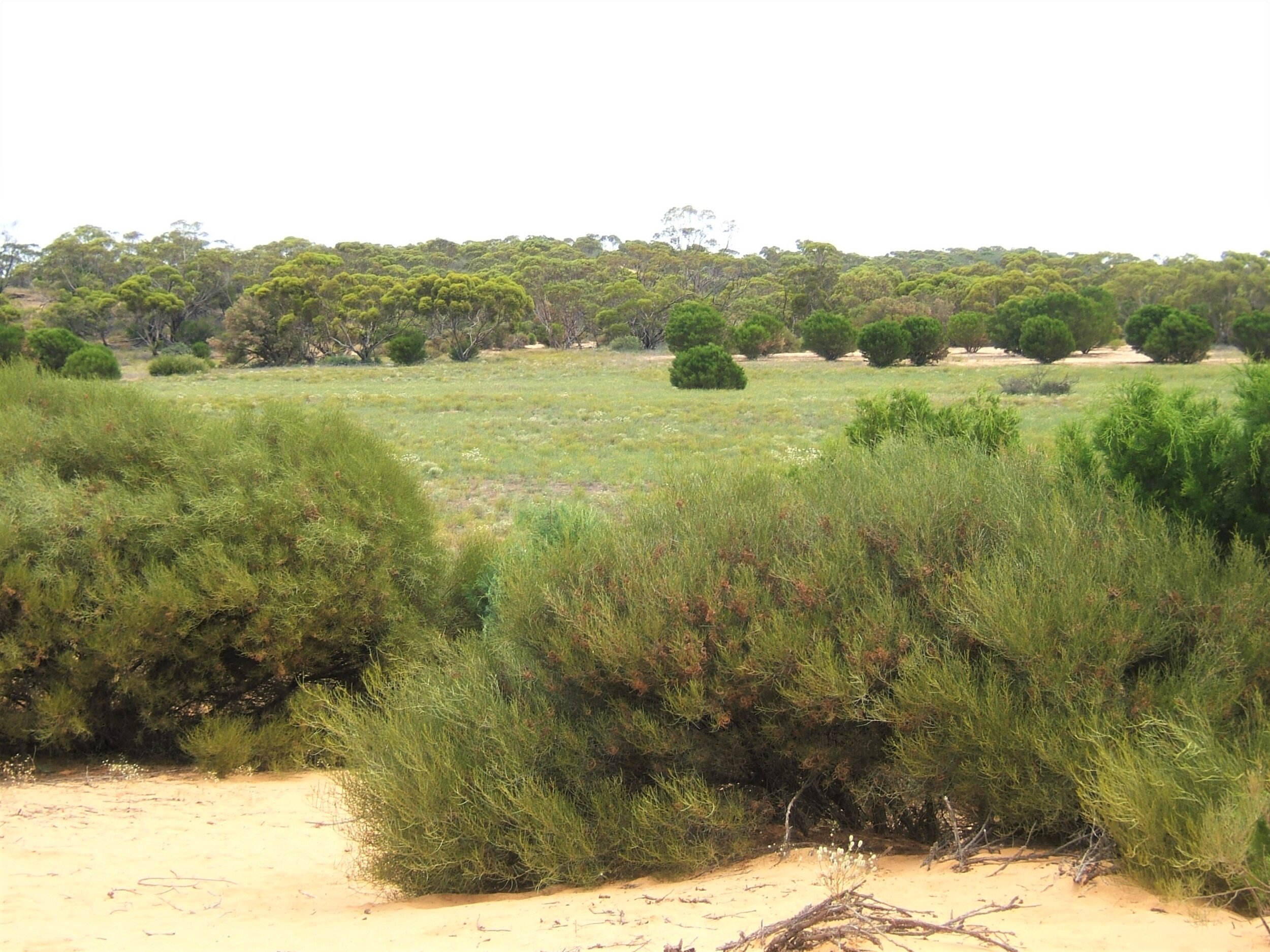The Hattah bush block was originally a part of Kulkyne Station which was owned by the Miller family. During the late 1870s the station grew to 3,000,000 acres and carried a few hundred thousand sheep.
In the end only a part of one of the four blocks on our property was cleared for cropping with the remainder left substantially untouched. No one is certain why this is. Adjacent land on three sides is cleared for sheep, grain and almond farming, with a national park on the fourth.
In the 1920s rabbit trappers operated on parts of the property and a small amount of the land was cleared for cropping. This activity ceased in the mid 1980s and the 80 hectares affected are slowly returning to their natural state.
Over time the property has been subject to a range of activities including timber removal, stock grazing, machinery access and soil cultivation. Sheep grazing occured over large parts of the property until 1985. These past agricultural activities will have impacted on the condition of the protected area and resulted in modification to the condition and extent of habitats available. With continued management these impacts will be reversed and the condition will slowly continue to improve.
First peoples
There is evidence that indigenous Australians have been in north western Victoria for at least 40,000 years and the Murray River valley was thought to be the most densely settled part of Aboriginal Australia.
While populations in the Mallee would have waxed and waned due to dryer or wetter climates of the time there were a number of aboriginal pathways from the river and the lakes. These pathways such as the one from Lake Mournpall to Wirrengren were used for thousands of years as a part of a network of social, cultural and economic exchange. This pathway crossed the Lendrook Plain which is just north west of the Hattah Bush Block.
Population movements in the 1870s were observed where groups would leave the lakes hunting kangaroos, emus and other game travelling into the dry scrub from from Raak to Wimlet, to Tiega where there was good hunting, towards Ouyen and then back to the lakes.
John Burch’s book Returning the Kulkyne which won the 2017 Victorian Premier’s History Award is an excellent resource for those interested in reading further about the history of the area.

